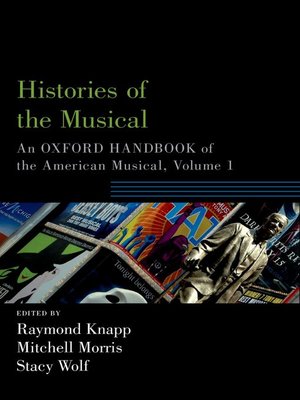Histories of the Musical
ebook ∣ An Oxford Handbook of the American Musical, Volume 1 · Oxford Handbooks
By Raymond Knapp

Sign up to save your library
With an OverDrive account, you can save your favorite libraries for at-a-glance information about availability. Find out more about OverDrive accounts.
Find this title in Libby, the library reading app by OverDrive.



Search for a digital library with this title
Title found at these libraries:
| Library Name | Distance |
|---|---|
| Loading... |
The American musical is a paradox. On stage or screen, musicals at once hold a dominant and a contested place in the worlds of entertainment, art, and scholarship. Born from a mélange of performance forms that included opera and operetta, vaudeville and burlesque, minstrelsy and jazz, musicals have always sought to amuse more than instruct, and to make money more than make political change. In spite of their unapologetic commercialism, though, musicals have achieved supreme artistry and have influenced culture as much as if not more than any other art form in America, including avant-garde and high art on the one hand, and the full range of popular and commercial art on the other. Reflecting, refracting, and shaping U.S. culture since the early twentieth century, musicals converse with shifting dynamics of gender and sexuality, ethnicity and race, and the very question of what it means to be American and to be human. The chapters gathered in this book, Volume I of the reissued Oxford Handbook, explore the American musical from both the outside and the inside. This first volume concentrates in particular on large-scale, more philosophical issues of relevance to the genre, considering issues of historical situations and formal procedure as they bear on the narratives we make concerning productions and performers, artists and audiences, commerce and context. The first four essays discuss ways of defining histories and texts, and apprehending the formal choices of singers and dancers; the second group of four take up the subtle challenges of the genre's signal transformations out of minstrelsy and Tin Pan Alley to "integration" and beyond.







